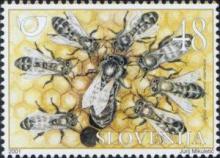Chronic sublethal stress causes bee colony failure
Current bee population declines and colony failures are well documented yet poorly understood and no single factor has been identified as a leading cause. The evidence is equivocal and puzzling: for instance, many pathogens and parasites can be found in both failing and surviving colonies and field pesticide exposure is typically sublethal. Here, we investigate how these results can be due to sublethal stress impairing colony function. We mathematically modelled stress on individual bees which impairs colony function and found how positive density dependence can cause multiple dynamic outcomes: some colonies fail while others thrive. We then exposed bumblebee colonies to sublethal levels of a neonicotinoid pesticide. The dynamics of colony failure, which we observed, were most accurately described by our model. We argue that our model can explain the enigmatic aspects of bee colony failures, highlighting an important role for sublethal stress in colony declines.










